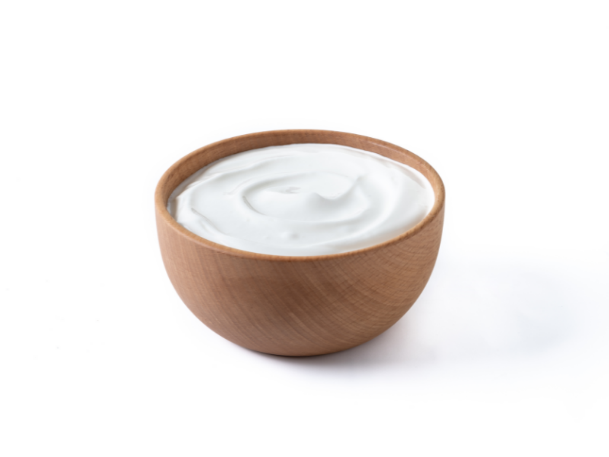2025.12.09
Yogurt is considered one of the most widely consumed and recognized dairy products in the world, holding a special place in the diet of many cultures. This food item is not only appreciated for its pleasant taste but also for being a rich source of nutrients such as protein, calcium, phosphorus, potassium, vitamin A, vitamin B2, and vitamin B12. According to statistics, the average per capita consumption of yogurt is expected to reach approximately 8.4 kg in 2025.

History of Yogurt
Yogurt is one of the oldest dairy products in the world, with a history spanning more than seven thousand years. The exact origin of yogurt is unknown, but based on historical and archaeological evidence, the oldest evidence of yogurt preparation from milk dates back to the Neolithic period (the last phase of the Stone Age) in Mesopotamia, a region that today encompasses Iraq, Syria, Kuwait, and parts of Iran and Turkey.
After the domestication of lactating animals in these regions, inhabitants stored milk in containers made from animal intestines. In warm climatic conditions, the proximity of milk to intestinal secretions led to the process of curdling and acidification. This naturally helped preserve the product and extended the shelf life of this essential commodity, milk.
The English word "Yogurt" is derived from the Turkish word "yoğurmak," which means to knead, thicken, or curdle. This naming refers to the process of milk thickening. The root "yog" in Turkish, meaning "to intensify," is also likely related to the alteration of milk compounds.
In the early 20th century, the Bulgarian scientist and physician Stamen Grigorov, by examining a sample of traditional yogurt he had brought from his birthplace in Bulgaria to Geneva (a city in Switzerland), discovered that the primary agent for milk transformation and yogurt formation was not merely animal intestinal secretions, but a specific type of bacteria. In 1905, he successfully identified this bacterium, and in his honor and due to Bulgaria's cultural connection with this product, this bacterium was named Lactobacillus delbrueckii subsp. bulgaricus.
The recognition of the role of these bacteria paved the way for the industrial and controlled production of yogurt. Gradually, with an understanding of the importance and function of these bacteria in milk fermentation, industrial yogurt production began, making it possible to produce yogurt in bulk with consistent quality and longer shelf life.
Industrial Production of Yogurt
Milk and lactic acid-producing bacteria are the main ingredients for yogurt production. Generally, two main species, Streptococcus thermophilus and Lactobacillus delbrueckii subsp. bulgaricus, are used to convert milk into yogurt. These two bacteria work together to break down the natural sugar in milk (lactose) and convert it into lactic acid, a process known as milk fermentation.
During the fermentation process, the conversion of lactose to lactic acid lowers the pH (acidic state), creating the sour taste of yogurt. Furthermore, acidification leads to the clotting and adhesion of milk proteins (coagulation), especially casein, which results in the firm and jelly-like texture of yogurt.
These bacteria, in addition to converting milk into yogurt, can have positive effects on health, such as improving digestion and boosting the immune system, which is why they are categorized as probiotic bacteria. Probiotic bacteria may be reduced or even completely destroyed during various processing stages, such as pasteurization, or during storage due to factors like air infiltration, temperature fluctuations, and a decrease in nutrients necessary for bacterial survival. Therefore, the presence of live and active bacteria until consumption is not always guaranteed.
Probiotic Bacteria
According to the joint definition of the Food and Agriculture Organization of the United Nations and the World Health Organization (FAO/WHO) Committee, probiotic bacteria are live microorganisms which, when administered in adequate amounts as part of a diet, confer a proven health benefit on the host.
The word "Probiotic" is derived from a combination of two Latin and Greek words. The first part of the word, "Pro," in Latin means "for" or "in support of," and the second part, "Biotic," is derived from the Greek word "Bios," meaning "life." Therefore, the word Probiotic means "for life" or "in support of life."
Thus, probiotic bacteria are recognized as beneficial bacteria, unlike pathogenic bacteria that cause infections or health disorders.
Probiotic Yogurt
All yogurts are prepared through fermentation using live and active bacteria, so generally speaking, yogurt can be a product that contains probiotic bacteria. However, not all yogurts qualify for the "probiotic yogurt" label. Probiotic yogurt, in addition to common bacteria (Streptococcus thermophilus and Lactobacillus delbrueckii subsp. bulgaricus), has other characteristics, which include:
- The use of specific probiotic bacteria, such as lactic acid bacteria (LAB) from the Lactobacillaceae family, Bifidobacteria family bacteria, etc., which are not only able to pass through the digestive tract but also have the ability to grow and multiply in the intestine. This means they are resistant to acidic stomach conditions and capable of growing in the presence of bile and intestinal conditions.
- The presence of a sufficient number of these bacteria until the expiration date. According to the Iranian National Standard for probiotic yogurt, if the yogurt contains at least 1 million live bacteria of each type per gram until the expiration date, it can be called probiotic yogurt. This means that in a bowl of probiotic yogurt (approximately 100 grams), there should be approximately 100 million live bacteria of each type.
Note: The name and quantity of these bacteria are listed on the food product label.
Therefore, probiotic yogurt is categorized as a functional food due to its probiotic bacteria. These types of foods, in addition to their usual nutritional value, can offer health benefits to humans when consumed in appropriate amounts. For example, probiotic yogurt, in addition to common nutritional benefits like protein and calcium, can also have positive effects on the digestive system due to the presence of probiotic bacteria.
Health Benefits of Probiotic Yogurt
Probiotic yogurts, due to the presence of live and beneficial bacteria, can offer various health benefits, some of which include:
- Improved digestive function and prevention of constipation.
- Better lactose digestion in individuals with lactose intolerance.
- Strengthening the immune system.
- Reducing symptoms of Irritable Bowel Syndrome (IBS), which is a chronic digestive disorder causing symptoms such as abdominal pain or discomfort, bloating, diarrhea, constipation, or fluctuation between the two.
Note: It should be noted that the extent of these properties depends on factors such as the number and type of live bacterial strain, the amount consumed, the duration of use, and the individual's overall health status.
Final Word
Probiotic yogurt is recognized as an effective vehicle for delivering beneficial bacteria and promoting overall health. Benefiting from its proven properties, such as improved digestive function, boosted immune system, and reduced symptoms of some digestive disorders, requires an informed choice.
When purchasing, simply looking for the word "probiotic" on the product label is not enough. It is recommended to carefully examine the nutrition label and product information to ensure that the names of the bacteria used and their quantities (in CFU) are clearly listed.


